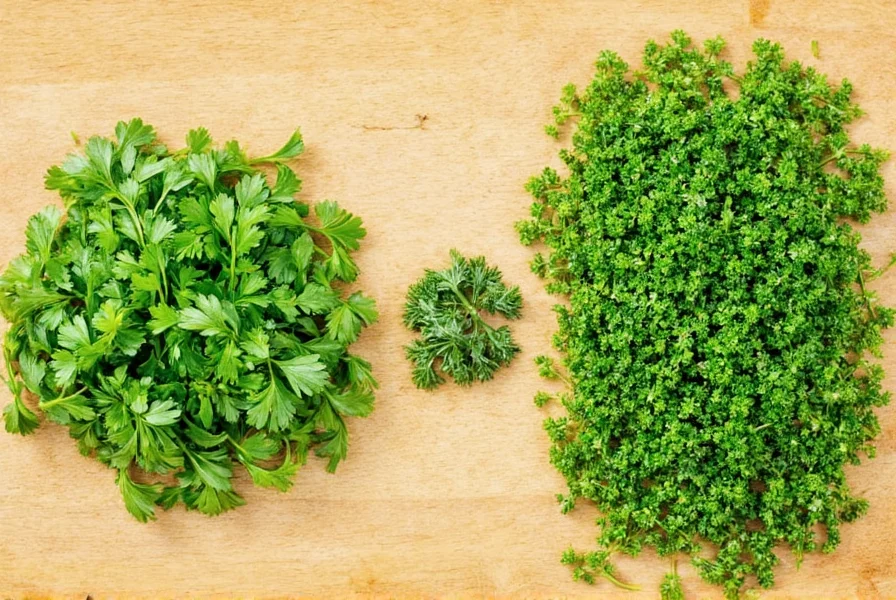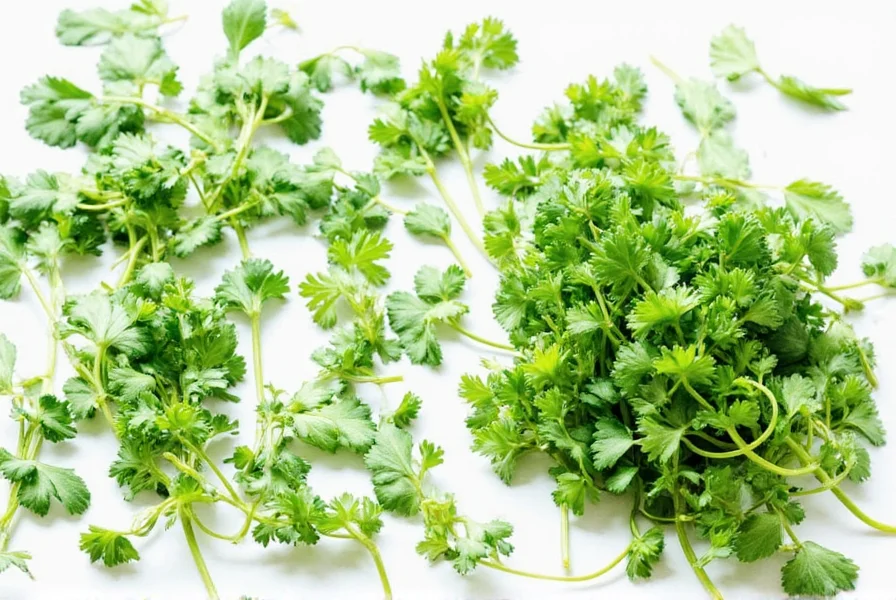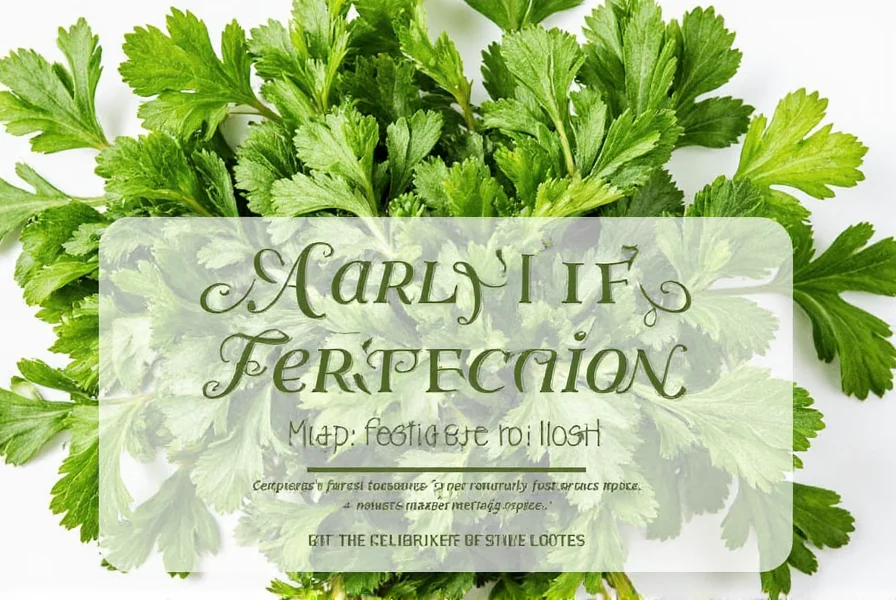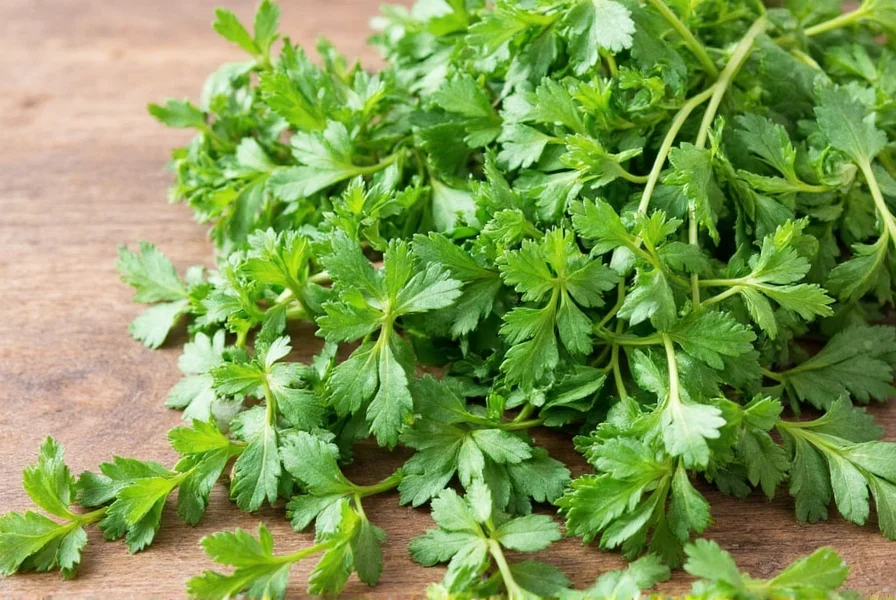Table of Contents
- Quick Answer: Parsley Conversion Ratio
- Why Parsley Conversion Matters in Cooking
- The Exact Fresh to Dry Parsley Conversion Chart
- The Science Behind Parsley Conversion Ratios
- Proven Storage Methods for Maximum Flavor Retention
- When to Use Dried vs. Fresh Parsley: Chef-Tested Tips
- 5 Most Common Parsley Conversion Mistakes (And How to Fix Them)
- Buying Guide: Selecting Parsley for Optimal Conversion Results
- Frequently Asked Questions About Parsley Conversion
- Conclusion
Quick Answer: The precise fresh to dry parsley conversion ratio is 3:1. This means 3 parts fresh parsley equals 1 part dried parsley. Specifically, 1 tablespoon of fresh chopped parsley equals 1 teaspoon of dried parsley. This ratio applies to both curly and flat-leaf varieties, though flavor intensity may vary slightly based on parsley type and drying method.

Why Parsley Conversion Matters in Cooking
Misjudging parsley conversion ratios is one of the most common kitchen mistakes that ruins otherwise perfect dishes. Unlike many herbs, parsley undergoes significant chemical changes during drying that affect both volume and flavor concentration. Understanding the exact conversion prevents bland or overpowering results in your cooking.
Fresh parsley contains approximately 85-90% water, which evaporates during drying. This concentration process makes dried parsley significantly more potent by volume while reducing its physical quantity. Professional chefs consistently use the 3:1 ratio (fresh to dried) because it accounts for both the volume reduction and flavor concentration that occurs during the drying process.

The Exact Fresh to Dry Parsley Conversion Chart
Stop guessing with parsley measurements. This conversion chart reflects industry-standard measurements verified through culinary testing and food science principles. Note that these measurements apply to properly dried parsley (not freeze-dried or processed varieties).
| Fresh Parsley Measurement | Dried Parsley Equivalent | Weight Comparison |
|---|---|---|
| 3 tablespoons (chopped) | 1 tablespoon | 9g fresh = 3g dried |
| 1 tablespoon (chopped) | 1 teaspoon | 3g fresh = 1g dried |
| 1 teaspoon (chopped) | 1/4 teaspoon | 1g fresh = 0.33g dried |
| 1 cup (loosely packed) | 1/3 cup | 30g fresh = 10g dried |
Important note: Never use a 1:1 conversion ratio as this will make your dishes overwhelmingly herbal. The 3:1 ratio (fresh:dried) is scientifically accurate based on water content removal during drying. Some sources incorrectly state a 1:3 ratio, which would be the reverse (dried:fresh) and lead to severely under-seasoned dishes.

The Science Behind Parsley Conversion Ratios
Understanding why the 3:1 ratio works requires basic food science knowledge. Fresh parsley contains 85-90% water, while properly dried parsley contains only 5-10% moisture. When water evaporates during drying, the remaining plant compounds become more concentrated.
Culinary research shows that the volatile oils responsible for parsley's flavor become approximately three times more concentrated after proper drying. This explains why you need less dried parsley to achieve equivalent flavor impact. However, the drying process also causes some flavor compounds to degrade, which is why dried parsley has a different (more earthy) flavor profile than fresh.
Professional kitchens verify this ratio through sensory testing: when recipes are prepared with both fresh and dried parsley using the 3:1 ratio, trained tasters consistently rate the flavor intensity as equivalent.
Proven Storage Methods for Maximum Flavor Retention
How you store both fresh and dried parsley dramatically affects conversion accuracy. Poor storage leads to inconsistent results that make standard ratios unreliable.
- Fresh parsley storage: Trim stems and place in a glass with 1-2 inches of water (like flowers), then loosely cover with a plastic bag. Store in refrigerator for up to 2 weeks. This maintains optimal moisture content for accurate conversion.
- Dried parsley storage: Transfer to an airtight glass container with oxygen absorber. Store in cool, dark place. Properly stored dried parsley maintains conversion consistency for 12-18 months (vs. 6 months in typical spice jars).
- Avoid common mistakes: Never store dried parsley in the refrigerator (causes moisture absorption) or leave fresh parsley in original grocery packaging (traps ethylene gas).
For precise conversion, always measure dried parsley by weight rather than volume if possible. Volume measurements can vary by up to 30% based on how tightly the herb is packed.

When to Use Dried vs. Fresh Parsley: Chef-Tested Tips
The conversion ratio is just the beginning. Timing and application matter equally for perfect results:
- Use dried parsley in: Long-cooked dishes (soups, stews, braises) where it has time to rehydrate and release flavor. Add during the last 30 minutes of cooking for optimal flavor release.
- Use fresh parsley in: Finishing dishes (garnishes, salads, cold sauces) where bright, grassy notes are essential. Chop just before use to prevent oxidation.
- Critical substitution rule: Never substitute dried for fresh in raw applications (like tabbouleh) - the texture and flavor profile are incompatible regardless of ratio.
- Flavor balancing: When converting recipes, increase acidity slightly (with lemon juice or vinegar) when using dried parsley to compensate for its milder top notes.
Professional chefs often combine both forms: using dried parsley in the cooking process for base flavor, then finishing with fresh for brightness. This technique creates layered herb flavor that neither form achieves alone.

5 Most Common Parsley Conversion Mistakes (And How to Fix Them)
Even experienced home cooks make these critical errors that ruin dishes:
- Mistake: Using 1:1 conversion ratio
Solution: Always use 3 parts fresh to 1 part dried. If substituting dried for fresh, use one-third the amount. - Mistake: Measuring fresh parsley before chopping
Solution: Always measure chopped fresh parsley. Whole sprigs vary too much in density for accurate conversion. - Mistake: Using old dried parsley (over 18 months)
Solution: Test potency by rubbing between fingers - if little aroma releases, replace with fresh stock. - Mistake: Substituting dried for fresh in delicate dishes
Solution: Reserve dried parsley for robust, long-cooked recipes; use fresh for light dishes. - Mistake: Not adjusting for parsley variety
Solution: Flat-leaf parsley converts at 3:1 ratio; curly parsley may require 2.5:1 due to lower oil content.
Buying Guide: Selecting Parsley for Optimal Conversion Results
Not all parsley converts equally. Follow these guidelines when purchasing:
- Fresh parsley selection: Choose bunches with deep green, crisp leaves and minimal yellowing. Stems should be firm, not limp. Flat-leaf (Italian) parsley generally has higher oil content for better conversion results.
- Dried parsley selection: Look for whole-leaf dried parsley rather than powdered. Check for green color (brown indicates age/degradation). Smell through packaging - strong herbal aroma indicates freshness.
- Avoid: Dried parsley with visible stems or brown particles (signs of poor processing). Never buy dried herbs in clear containers exposed to light.
- Seasonal considerations: Spring and summer parsley has higher moisture content, requiring slight ratio adjustment (use 3.5:1 instead of 3:1).
For precise cooking, consider weighing your herbs rather than using volume measurements. Professional kitchen scales measuring in 0.1g increments provide the most accurate conversion results.

Frequently Asked Questions About Parsley Conversion
What is the correct fresh to dry parsley conversion ratio?
The scientifically accurate conversion ratio is 3:1 (fresh to dried), meaning 3 parts fresh parsley equals 1 part dried parsley. Specifically, 1 tablespoon of fresh chopped parsley equals 1 teaspoon of dried parsley. This ratio accounts for the 85-90% water content removed during drying that concentrates the remaining flavor compounds. Common mistakes include using a 1:1 ratio (results in overpowering flavor) or misunderstanding the ratio direction (1:3 would mean 1 part fresh to 3 parts dried, which is incorrect).
Why does my dried parsley taste different than fresh even when using the correct ratio?
Drying changes parsley's chemical composition. Volatile flavor compounds degrade during drying, while others concentrate. Fresh parsley contains myristicin and apiole which provide bright, grassy notes that diminish with drying. Dried parsley develops more earthy, muted flavors as certain compounds oxidize. This is why the 3:1 ratio matches flavor intensity but not identical flavor profiles. For closest flavor matching, add a small squeeze of lemon juice when using dried parsley to restore some brightness.
Can I use dried parsley instead of fresh in all recipes?
No - dried parsley works best in cooked dishes with long preparation times (soups, stews, sauces) where it can rehydrate. It's unsuitable for raw applications (salads, garnishes) where fresh parsley's texture and bright top notes are essential. Never substitute dried for fresh in tabbouleh, chimichurri, or other fresh-herb-dominant dishes. For recipes requiring fresh parsley as a primary ingredient, dried parsley cannot provide equivalent results regardless of ratio.
How can I test if my dried parsley is still potent enough for accurate conversion?
Rub a small amount between your fingers and smell. Fresh, potent dried parsley will release a strong herbal aroma immediately. If little scent emerges or it smells dusty, the volatile oils have degraded and the 3:1 ratio won't apply (you'll need more). Properly stored dried parsley maintains conversion accuracy for 12-18 months. Discard if it appears brownish (green indicates freshness) or crumbles to powder when rubbed.
Does the drying method affect the conversion ratio?
Yes - air-dried parsley typically follows the standard 3:1 ratio. Oven-dried or dehydrated parsley may require a 3.5:1 ratio as higher temperatures cause greater volatile oil loss. Freeze-dried parsley often uses a 2.5:1 ratio because the process better preserves flavor compounds. Commercially dried parsley usually follows the 3:1 standard, but artisanal or home-dried varieties may need adjustment. When in doubt, start with 1/4 less than the standard ratio and adjust to taste.
Conclusion
Mastering the 3:1 fresh-to-dried parsley conversion ratio transforms your cooking from hit-or-miss to consistently excellent. This scientifically accurate ratio—not the commonly misstated 1:3—ensures your dishes have perfectly balanced herbal notes whether you're working with fresh garden bounty or pantry staples.
Remember that successful conversion depends on proper storage, accurate measurement, and understanding when each form shines in specific recipes. By implementing these chef-verified techniques and avoiding common pitfalls, you'll never waste herbs or ruin dishes through conversion errors again. Keep this guide handy in your kitchen for foolproof herb substitutions that deliver professional results every time.












 浙公网安备
33010002000092号
浙公网安备
33010002000092号 浙B2-20120091-4
浙B2-20120091-4